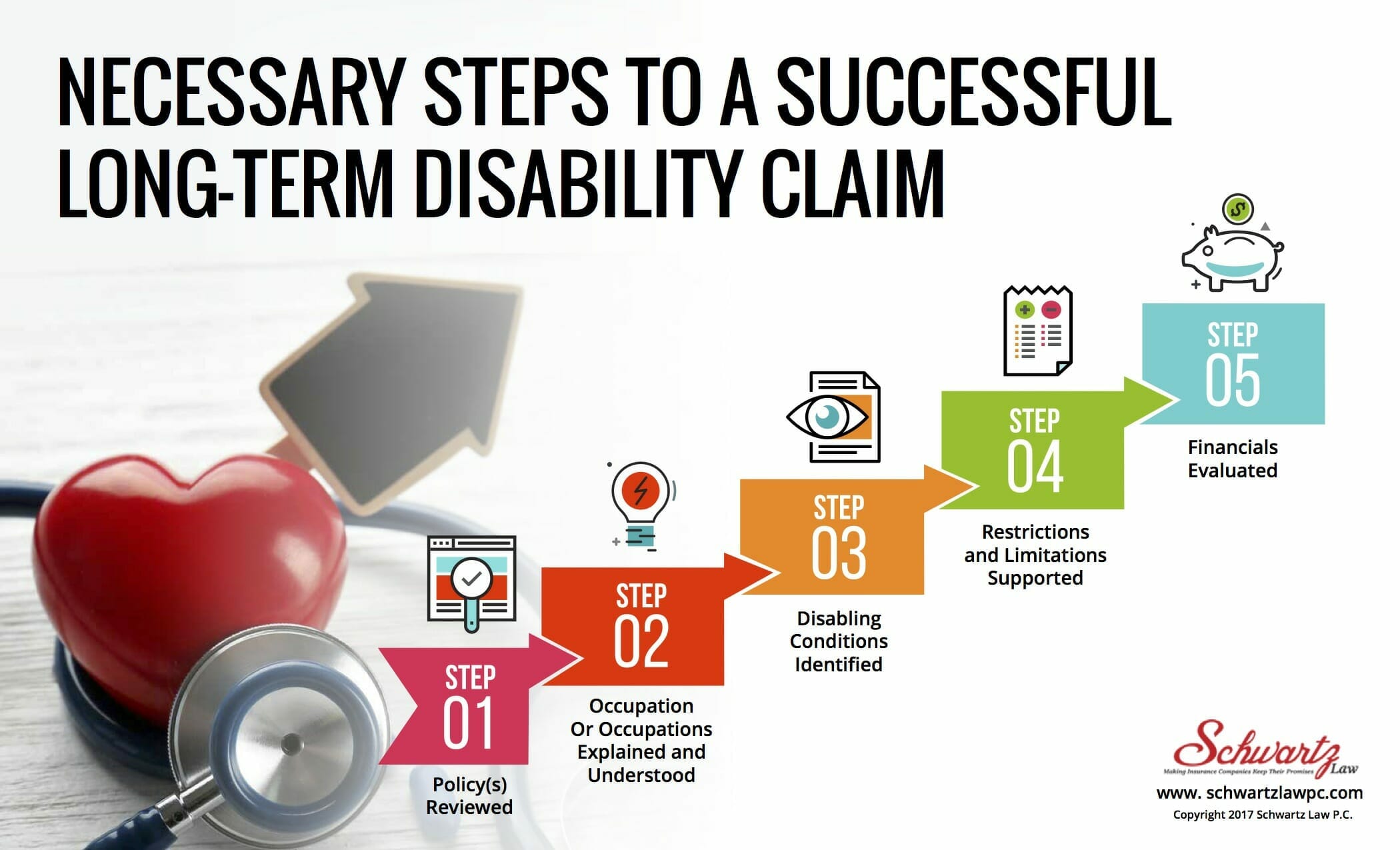Policies Reviewed
The first thing a competent lawyer must do in evaluating a potential long-term disability claim is discuss with you what type of insurance policy or policies you own. Do you have an individual or private long-term disability insurance policy? Do you have a group long-term disability insurance policy? Do you have both? If you own a business, do you have long-term disability business overhead expense coverage? If you have partners, do you have a long-term disability buyout policy? Do you have a life insurance policy(s) that contains a waiver of premium provision during time periods when you are disabled?
Once an attorney has the body of long-term disability coverage applicable in your circumstances, the policies then must be reviewed and evaluated to determine the circumstances under which they will or will not pay benefits.
Occupation(s) Explained and Understood
An experienced lawyer needs to know and understand what is contained in your policy or policies, insofar as the definition of your occupation is concerned. Do your policies contain the own occupation definition of disability, the any occupation of disability, or some modified version of the two? If your policy or policies contain the own occupation definition of disability, the lawyer must then spend time understanding what your occupational duties and responsibilities are, for purposes of evaluating whether or not injury or sickness prevents or limits you from performing those duties. The attorney also needs to understand how to support and, if possible, document your occupational duties.
Disabling Conditions Identified
Step three in a successful long-term disability claim is identifying what condition(s) are limiting or preventing you from performing the duties of your occupation or any occupation. Do you have one disabling condition, or multiple disabling conditions? What symptoms are you experiencing that limit you? Have the conditions which you believe disable you been diagnosed and identified by an appropriate doctor? A competent lawyer must spend time understanding what you believe disables you.
Restrictions and Limitations Supported
After identifying what condition or conditions limit or prevent you from working, the next step to a successful long-term disability claim is determining whether you have appropriate medical support for those restrictions and limitations. Have you been diagnosed by a doctor who specializes in the condition or conditions would you believe disable you? Have you received the appropriate diagnostic tests which best identify or diagnose those conditions? Have you been treated by doctors appropriate for your disabling conditions on a routine basis? Your lawyer must understand the status of your medical treatment and advise you on what is necessary to ensure that the treatment is sufficient enough to be accepted by a long-term disability insurance company.
Financials Evaluated
An experienced lawyer in this area will require you to furnish tax returns for a period of years leading up to the date of your disability and, potentially, other financial information concerning your business, if you own one, or year-to-date pay stubs if you are an employee. Understanding this financial information will be important in successfully filing a long-term disability claim. And trust me, the long-term disability insurance company will be evaluating this information very carefully themselves.
Conclusion
This lays out the basic steps that a capable attorney should be evaluating in connection with the viability of your long-term disability claim. While successfully submitting a long-term disability claim is a complicated process, understanding these five steps, and knowing what to do to make sure the steps are properly followed, should take any disabled policyholder a very long way to a successful claim submission.
Evan S. Schwartz
Founder of Schwartz, Conroy & Hack
833-824-5350
[email protected]


